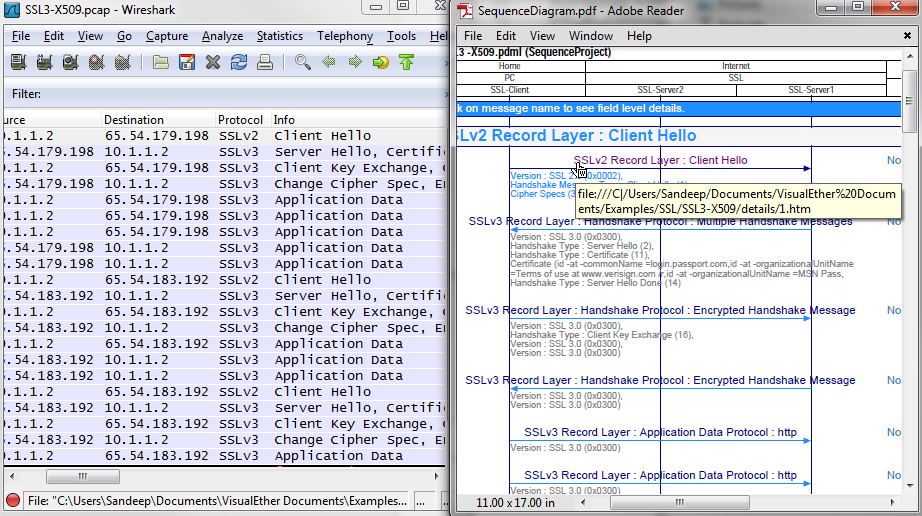

Here is an example: PUT _template/packets and to prevent an explosion of indexed fields, you should explicitly specify an Elasticsearch mapping. To index numbers as numbers, timestamps as timestamps, etc. Without the right data types, you will not be able to perform type-specific operations on these fields (e.g. Also, the output of tshark -T ek contains all field values as strings, regardless of whether the data is actually text or numbers including timestamps and IP addresses, for example. In fact, since a large number of fields can slow down both indexing and query speed Elasticsearch 5.5 limits the number of fields in an index to 1000 by default. Consequently, creating an index on all these fields is usually not the right thing to do. Most likely, the vast majority of these fields will never be searched or aggregated on. As mentioned above Wireshark knows about 200,000 individual fields. Raw packet data contains an extraordinarily large amount of fields. Importing from Wireshark/Tshark Elasticsearch Mapping Will read packets from capture file capture.pcap and output them as JSON for the Elasticsearch Bulk API format into the file packets.json. tshark -r capture.pcap -T ek > packets.json Will do a live capture of packets on the eth0 network interface and output them in Elasticsearch Bulk API format into the file packets.json. One of the output formats supported by tshark since version 2.2 ( released in September 2016) is a JSON format for the Elasticsearch Bulk API: tshark -i eth0 -T ek > packets.json As its output, tshark can produce reports and statistics, but also parsed packet data in different text formats. In addition to a GUI it provides the command-line utility tshark to capture live traffic as well as read and parse capture files. Its GUI is familiar to most network and security professionals. It can recognize more than 2,000 protocols containing over 200,000 fields. Wireshark is the most popular packet capture and analysis software, and open source. Especially its ability to match responses with their original requests and indexing the merged event is very useful if you’re looking at specific protocols.
WIRESHARK PCAP VERSION FULL
However, it is not built for full packet capture and parsing of the myriad different protocols out in the world and is best used for monitoring specific applications. It can recognize and parse a number of application-level protocols such as HTTP, MySQL and DNS, as well as general flow information. Packetbeat can be configured to capture network packets live as well as read packets from a capture file with the -I option.


There is already a tool in the Elastic Stack to index network data into Elasticsearch: Packetbeat. Network packet analysis pipeline with Wireshark and the Elastic Stack Packet capture Packetbeat
WIRESHARK PCAP VERSION HOW TO
In this blog post, I will show how to set up a pipeline using Wireshark and the Elastic Stack that can look like this: Search and Visualize - Exploring the data in detail or in aggregate. Protocol parsing - Parsing out the different network protocols and fields.ģ. Packet capture - Recording the packet traffic on a network.Ģ. ArchitectureĪny data pipeline for network capture and analysis is composed of several steps:ġ. All of this is data that can be stored in Elasticsearch and explored, searched and visualized in Kibana. While network traffic itself is sent in a binary format, each packet contains many different fields that using proper tools can be parsed out into numbers, text, timestamps, IP addresses, etc. Or it can be extensive, for example using an outside network tap to capture all traffic. In that case, only the traffic of a single application or a single server might be captured, and only for a specified period of time. Packet capture can be ad hoc, used to debug a specific problem. Being able to look into every single piece of metadata and payload that went over the wire provides very useful visibility and helps to monitor systems, debug issues, and detect anomalies and attackers. February 15, 2019: Starting with Wireshark 3.0.0rc1, TShark can now generate an Elasticsearch mapping file by using the -G elastic-mapping option.įor network administrators and security analysts, one of the most important capabilities is packet capture and analysis.


 0 kommentar(er)
0 kommentar(er)
